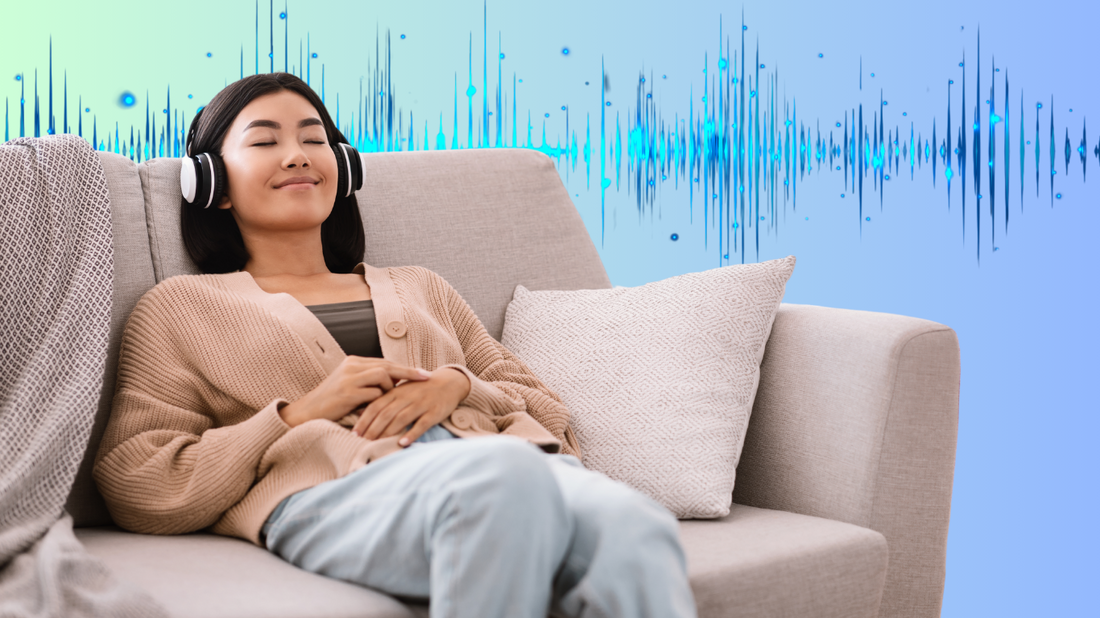Trouble focusing because of a loud neighbor? Or maybe the traffic outside is making it hard to get some shut-eye. It happens to the best of us, and we all long for some quiet. Well, sound masking might just be the thing you need – and it's not about shutting yourself off from the world. You might have come across sound masking without even realizing it.
Sound masking is pretty simple, though the term sounds complex. Imagine a soft background noise that helps dull the sharper sounds around you. If you're someone who uses a fan for a good night's sleep, or you find a rainstorm soothing, you've got the idea of sound masking down pat. Let's talk about how this nifty technique keeps your go-to places calm and helps you keep your cool and concentration.
White Noise Devices for TinnitusUnderstanding Sound Masking

Struggling to focus because of noise around you? Sound masking could be the fix. Imagine a subtle background sound that helps cushion disruptive chatter or office din. It's not like noise cancellation that wipes out sound; sound masking adds a soft, consistent noise to your environment. Picture the reassuring hum of a fan at night - it's like that but tailored specifically to muffle interruptions such as human speech.
Don't get the wrong idea; sound masking isn't about blaring tunes to overwhelm existing noise. It's more discreet, akin to a soft murmur that hushes commotion without becoming a distraction itself. You hardly know it's there, yet it does the trick. While you're engrossed in a book or tackling the daily crossword, and the world around you seems to quiet down, sound masking might just be at work, subtly doing its job.
Understanding Sound Masking
Trying to concentrate but can't because of the noise around you? Sound masking might be the solution you need. We're talking about a gentle background noise designed to soften distracting conversations or office noise. This isn't about erasing sounds like noise-cancelling technology; instead, sound masking adds a low, steady sound to your environment. Imagine the calming drone of a fan while you sleep – it's similar but crafted to dull the disruption of voices.
We're not discussing loud music to drown out the noise around you. It's a quiet, stable sound akin to a whisper that suppresses the chaos but doesn't distract you. You might not even realize it's there, but it’s effective. As you're absorbed in reading or focused on your daily tasks, and the bustle around you seems to fade, that’s sound masking quietly at work.
How Sound Masking Utilizes Sensory Adaptation
Notice how the tick-tock of a clock fades into the background after some time? That's your brain filtering out non-essential noise. Sound masking taps into this natural process by creating a consistent, subtle noise. Initially noticeable, it soon becomes part of the surroundings.
The noise from sound masking is deliberate, remaining constant without any jarring peaks. It's like a seasoning that enhances without overtaking the flavors. As your brain discounts this background sound, surprising noises, like a sudden laugh, become less intrusive. You maintain concentration as the sound masking keeps the everyday sounds from interrupting your peace.
What Is Sound Masking Used For?
Loud noises can disrupt your sleep or keep you from concentrating, right? Sound masking is a solution that creates a soothing background to keep that kind of noise at bay. In offices where focus is key, interruptions from phone calls or foot traffic are constant. But with sound masking, those sounds are softened, making them easier on the ears.
This isn't just about work. It's also for those nights when sleep is elusive because the world outside is too noisy. Sound masking introduces a consistent, unobtrusive sound to help muffle street noise or barking dogs. For those dealing with tinnitus, it can work wonders. It gently encourages the brain to ignore that constant ringing, promoting relaxation and better sleep. So yes, sound masking can be that quiet ally that says, "I've got this," allowing you to rest or work without the disruptive noise.
Conclusion
Wrapping things up, sound masking is like an unnoticeable buddy that softens the loud world around us. It subtly blends into the background, allowing you to concentrate or sleep without the usual distractions. It’s not about silencing your space, but about adding a steady whisper that makes the environment more manageable.
Sound masking might remind you of the relaxing hum of traffic in the distance that helps you fall asleep. It’s there, but it’s not intrusive. It’s a simple solution that can make a significant impact in day-to-day activities, especially if noises easily break your focus or disturb your rest.
At HearWell Group, we take your auditory comfort seriously. Sound masking is one of the many tools we believe can improve the quality of your life by helping manage unwanted noise. It’s worth trying, particularly if you value peace and quiet while working or resting.
Wrapping Up Sound Masking
Why should noise keep bugging you in your own home or at work? Think of sound masking as that pal who says in a hush, "I’ve got this noise problem covered for you." It’s practically a secret ingredient that dials down irksome sounds. Now you can enjoy a book or catch some Z's without being startled by that car horn outside.
You know how a fan’s soft buzz can be oddly comforting at bedtime? Sound masking works on the same principle. It’s the unseen warrior of the sound world, present without making a fuss, improving both days and nights for us all. And if you need an extra hand, the pros at HearWell Group are ready with hearing support and more advice, making sure we all get our fair share of tranquility.
Sources & References
- Hammer, M. S., Swinburn, T. K., & Neitzel, R. L. (2014). Environmental noise pollution in the United States: developing an effective public health response. Environmental Health Perspectives, 122(2), 115-119. https://www.ncbi.nlm.nih.gov/pmc/articles/PMC3915267/
- Kujawa, S. G., & Liberman, M. C. (2009). Adding insult to injury: cochlear nerve degeneration after "temporary" noise-induced hearing loss. Journal of Neuroscience, 29(45), 14077-14085. https://www.ncbi.nlm.nih.gov/pmc/articles/PMC2812055/
- Basner, M., Babisch, W., Davis, A., Brink, M., Clark, C., Janssen, S., & Stansfeld, S. (2014). Auditory and non-auditory effects of noise on health. The Lancet, 383(9925), 1325-1332. https://www.ncbi.nlm.nih.gov/pmc/articles/PMC3988259/
- Healy, E. W., Yoho, S. E., & Apoux, F. (2019). Adaptation to Noise in Human Speech Recognition Unrelated to the Medial Olivocochlear Reflex. Journal of the Association for Research in Otolaryngology, 20(4), 395-403. https://www.ncbi.nlm.nih.gov/pmc/articles/PMC6596031/
- World Health Organization. (2021). World report on hearing. https://www.who.int/publications/i/item/world-report-on-hearing
- U.S. Environmental Protection Agency. (2021). Clean Air Act Title IV - Noise Pollution. https://www.epa.gov/clean-air-act-overview/clean-air-act-title-iv-noise-pollution
- U.S. General Services Administration. (2011). Sound Matters: How to Achieve Acoustic Comfort in the Contemporary Office. https://www.gsa.gov/cdnstatic/GSA_Sound_Matters_%28Dec_2011%29_508.pdf

The Hear Well Group Research Team: Trusted Hearing Health Insights
Our experienced research team compiles hearing health data from credible, peer-reviewed sources and presents it in easy-to-understand terminology. We ensure accuracy and trustworthiness, providing up-to-date, evidence-based recommendations to enhance hearing care practices and inform our readers' hearing well-being decisions.


